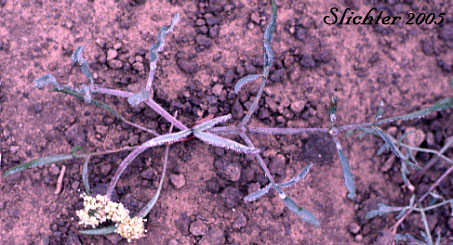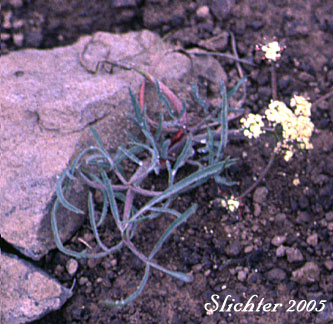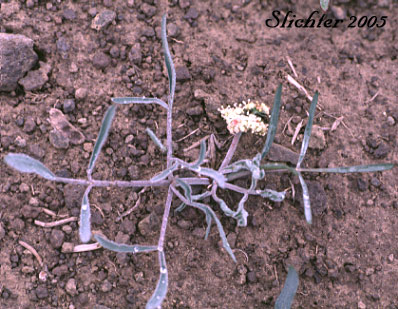
Lomatium ambiguum

 Characteristics:
Characteristics:
Also known as lacy lomatium, swale desert parsley is a low perennial wildflower with simple to branched stems from 10-80 cm long. The edible root ranges from short and globose to long and thin. The herbage of the stems and leaves is both glabrous and glaucous. The leaves are either both basal and on the stems, or often entirely on the stems. Individual leaves are ternately to ternate-pinnately twice to several times dissected into narrow, linear segments. The larger segments are 1-8 cm long and up to 5 mm wide while the smaller segments are only 1-2 mm long. The long petioles are sheathed their entire length.
The inflorescence is an umbel of 8-17 rays of unequal length with each ray from 3-10 cm long in fruit. No bracts are found at the base of the umbel or umbellets. The pedicels are 4-13 mm long and the flowers are yellowish. The glabrous fruits are narrowly oblong, 5.5-12 mm long and 1.5-3.5 mm wide. The lateral wings of the fruits are less than half as wide as the body of the fruit.
Swale desert parsley is found on open, dry, stony slopes, flats and swales from the scablands, valleys and foothills up to middle elevations in the mountains. It may be found to elevations as high as 2700 meters.
Swale desert parsley may be found east of the Cascade Mts. from southern British Columbia across central and eastern Washington to northern and northeastern Oregon and east to Montana and at the southern extent of its range across the Snake River Plains of Idaho to northwestern Wyoming and the Wasatch Mts. of Utah.
